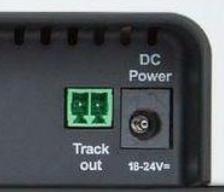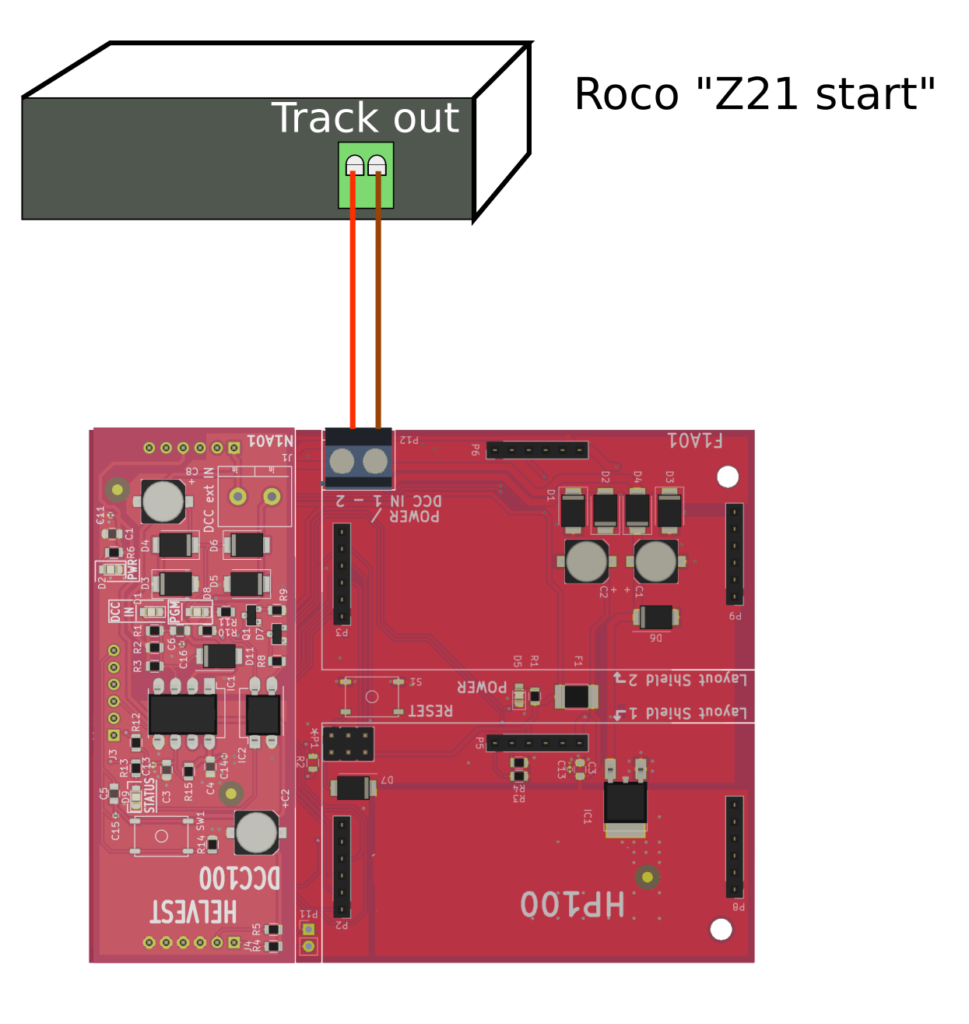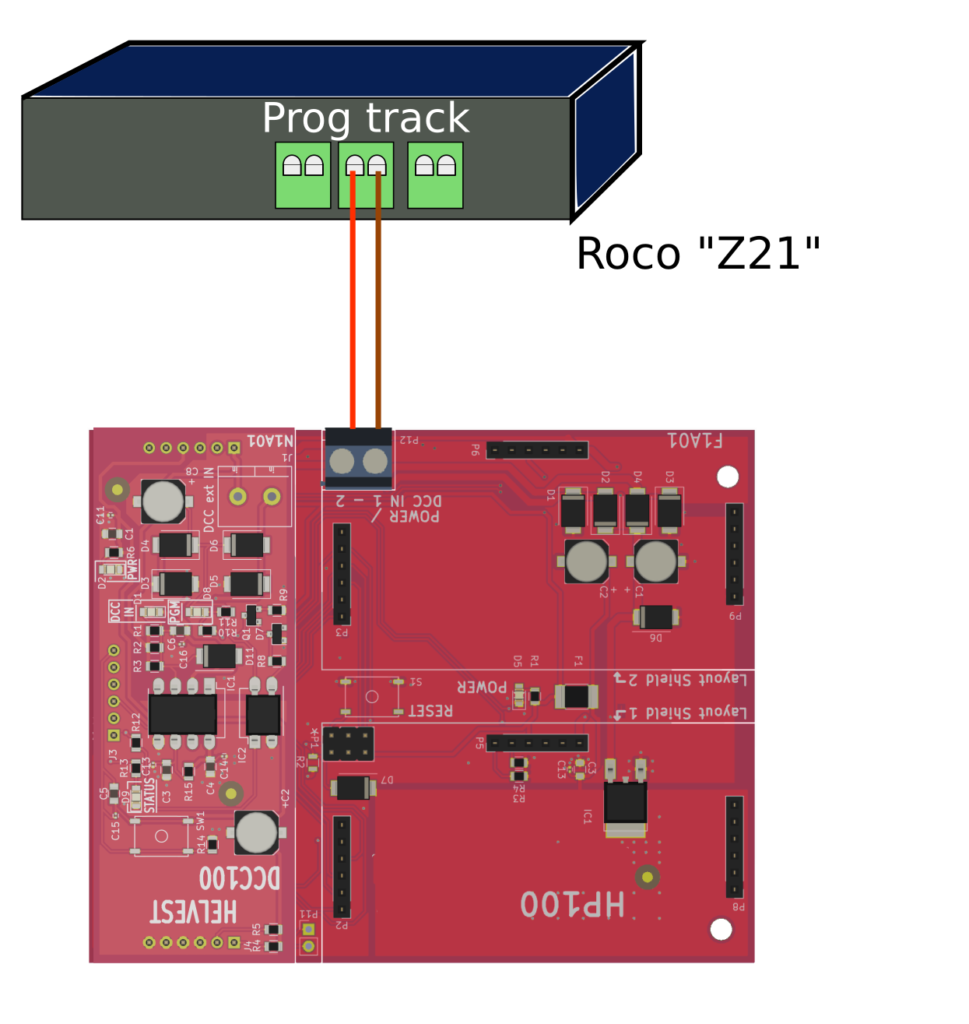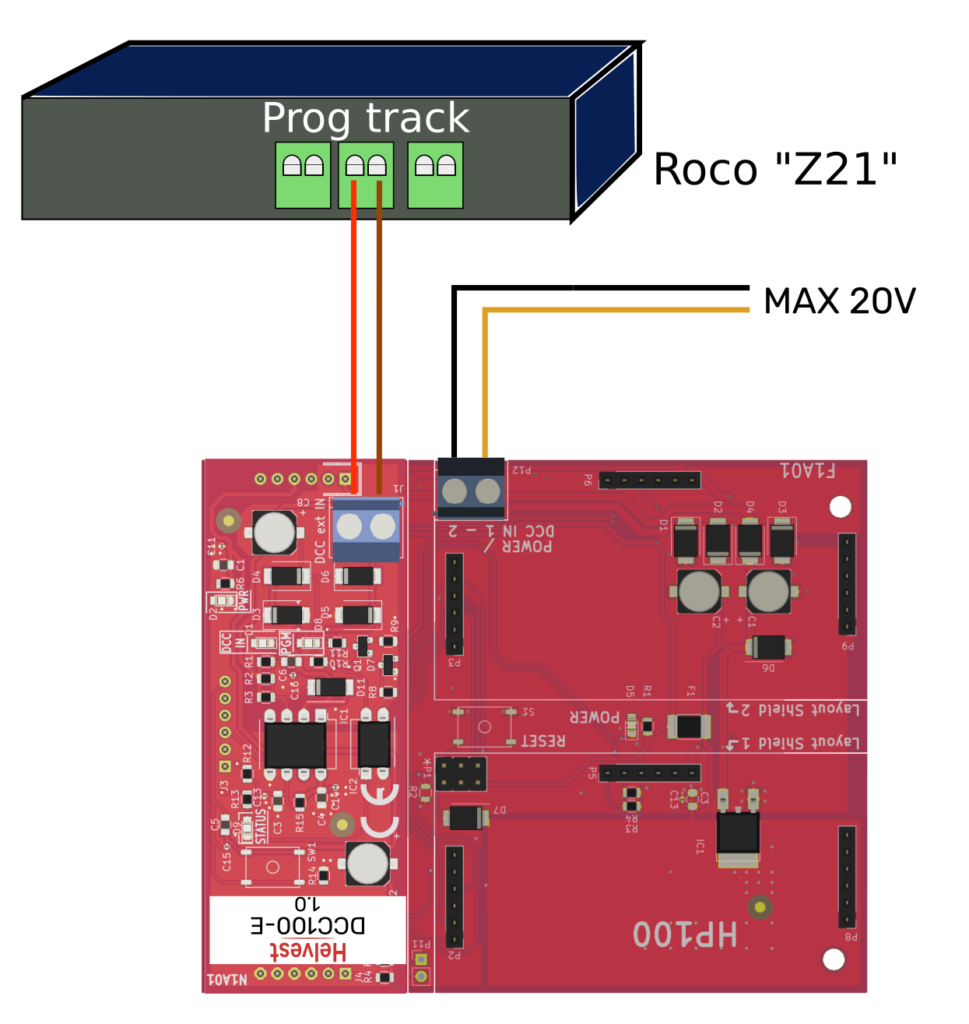Connection of Helvest decoders to Roco control units
Tags: DCC digital (en), DCC100-E(en), DCC100(en)
Comments are closed.
The Roco Z21 is one of the most popular power stations, but it has some peculiarities that create doubts for users when using accessory decoders. We would like to clarify them here once again.
The DCC protocol has been interpreted by Roco differently from nearly all other manufacturers, and some small differences must be taken into account.
We would like to clarify that the Helvest decoders, as stated in the instructions, have been tested and declared DCC-compliant by the NMRA, the body that issued the specifications. The NMRA certification is given by the logo next here and guarantees the correct interpretation of the protocol and compatibility between accessories from different manufacturers.

The DCC NMRA logo
Connecting decoders for programming
First of all, in order to programme the decoder in DCC, it must be connected to the appropriate output of the control unit.
If you own the Z21 Start (the “white” one): this control unit does not have a specific programming output, so you have to disconnect the layout (green connector, marked “track out” ) and connect the decoder directly to that connector.

Left: Detail of the Z21 ‘start’ programming connector.
Below left: Wiring diagram for programming a DCC-powered decoder (with DCC 100).
Below right: Wiring diagram for programming a decoder with external power supply (with DCC100-E)


If you own the Z21 (“black”): this control unit has a dedicated programming output (central green connector, marked “Prog Track”), so you can connect the decoder directly to this output without disconnecting the rest of the layout.

Left: Detail of the Z21 programming connector.
Below left: Wiring diagram for programming a DCC-powered decoder (with DCC 100).
Below right: Wiring diagram for programming a decoder with external power supply (with DCC100-E)


How addresses are calculated
We have already written about this issue, but sometimes we still get questions: the difficulty is in assigning the address. In fact the Z21, as mentioned, uses a special calculation.
The thing itself is simple: Z21 increases the address of each output by 4, and each board address by 1 from what is programmed. For example, by programming the value 5 into CV1, the board responds to address 6. Or by writing the value 25 into CV 140, tre output responds to address 29 (25 +4).
How to simplify this with Helvest tools
We have provided a spreadsheet where you can easily calculate the values, based on what is written in the CVs of the address: https://helvest.ch/wp-content/uploads/2020/09/Address-CV.xlsx
In this table, simply enter in the green boxes the values you write in CV1 and CV35, and you will get in the pink boxes the values to which your Z21 will respond.
How to simplify this on the Z21 app
The Z21 app has a function to ‘shift’ the outputs of the accessories by 4 steps, so that they respond to all other control units. This is described in question “4.8” of the Roco FAQ: https://www.z21.eu/en/faqs-support/questions-answers
As a conclusion
In conclusione, i decoder DCC Helvest, possedendo la certificazione NMRA, sono compatibili con qualsiasi centrale che sia certificata NMRA.
Le difficoltà di utilizzo della centrale Roco sono legate esclusivamente all’indirizzo, che questo produttore attiva con un metodo diverso dagli altri, ma come già detto, la cosa non costituisce un problema: è sufficiente ricordare di aggiungere 4 alle uscite, o impostare l’app Roco di conseguenza.
Una volta compreso questo, la gestione digitale con questa centrale non costituisce alcun problema.
The names Roco, Z21 are trademarks of third parties.